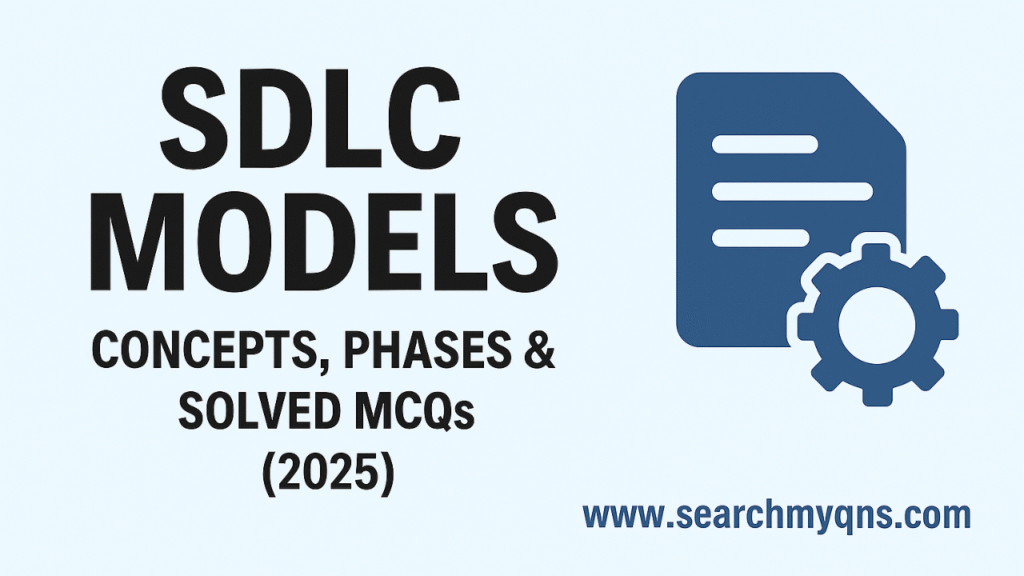SDLC Models – Concepts & MCQs (2025)
The Software Development Life Cycle (SDLC) is a systematic process used to develop high-quality software efficiently. It defines the stages involved in software development, from requirement gathering to maintenance. Understanding SDLC models is essential for students, developers, and aspirants preparing for competitive exams.
Phases of SDLC
- Requirement Analysis – Gathering and analyzing software requirements.
- System Design – Creating architecture and design specifications.
- Implementation (Coding) – Actual software development begins.
- Testing – Ensuring the software is error-free and meets requirements.
- Deployment – Releasing the software to users.
- Maintenance – Enhancing and fixing issues post-deployment.
Popular SDLC Models
1. Waterfall Model
- Linear sequential approach.
- Each phase must be completed before moving to the next.
- Best for small projects with well-defined requirements.
2. Iterative Model
- Software is developed in increments.
- Feedback from earlier versions is used for improvement.
3. Spiral Model
- Combines iterative and risk analysis.
- Focuses on risk management at each phase.
4. V-Model (Validation & Verification Model)
- Emphasizes testing at every stage.
- Each development phase has a corresponding testing phase.
5. Agile Model
- Flexible and adaptive approach.
- Software is developed in small iterations (sprints).
- Continuous feedback from users.
Advantages of SDLC Models
- Provides structure and clarity
- Improves project management
- Enhances software quality
- Reduces risks in development
MCQs on SDLC Models
Q1. Which SDLC model is also known as the Verification & Validation model?
A) Spiral Model
B) Agile Model
C) V-Model
D) Waterfall Model
Answer: C) V-Model
Q2. Agile methodology is based on:
A) Iterative development
B) Linear development
C) Waterfall approach
D) None of these
Answer: A) Iterative development
Q3. Which SDLC model focuses on risk analysis at every phase?
A) Agile
B) Spiral
C) Waterfall
D) V-Model
Answer: B) Spiral
FAQs:
Q1. Why is SDLC important?
It provides a structured framework for software development, reducing risks and ensuring quality.
Q2. Which SDLC model is best for beginners?
The Waterfall model, since it’s easy to understand and follow.
Q3. What’s the difference between Waterfall and Agile?
Waterfall is sequential (no going back), while Agile is iterative & flexible, allowing feedback at every sprint.
Q4. Which model is preferred for large and complex projects?
The Spiral model, since it emphasizes risk management and iterative improvements.
Q5. Do companies still use Waterfall?
Yes, especially in industries where requirements are fixed (like banking, defense, and construction software).
